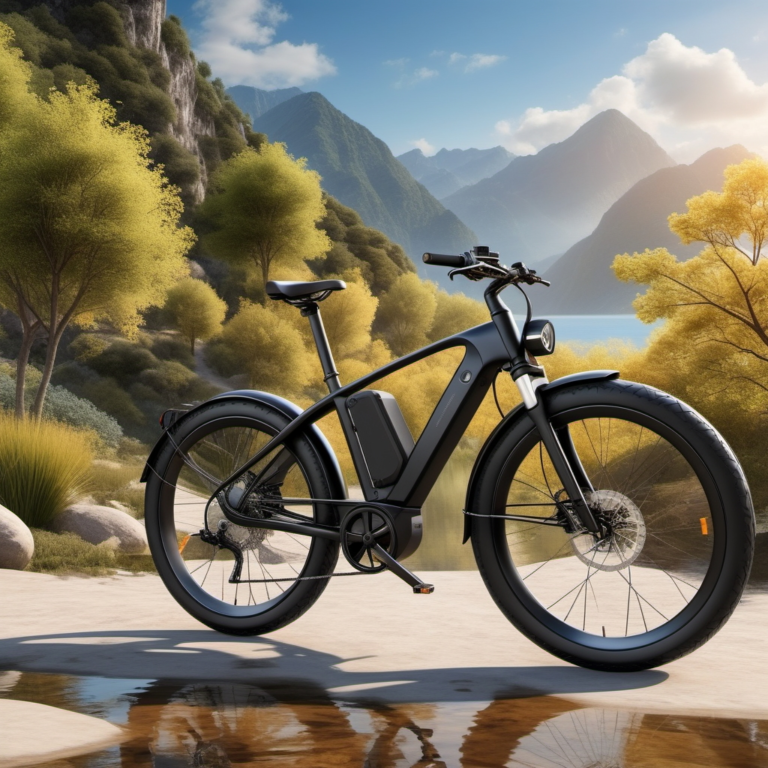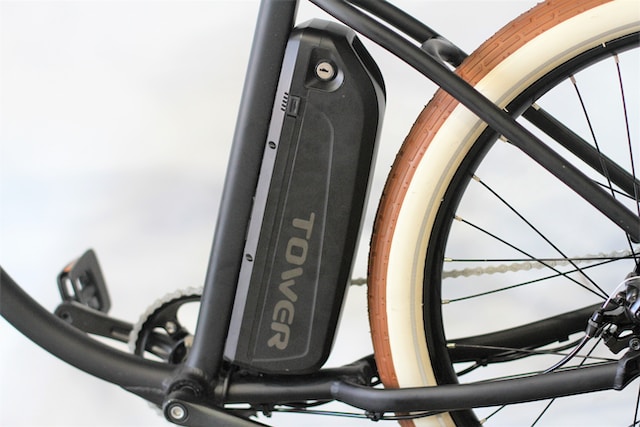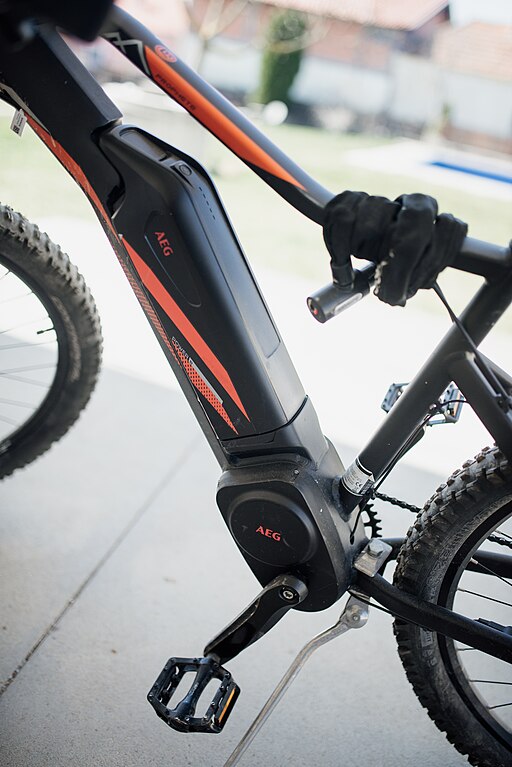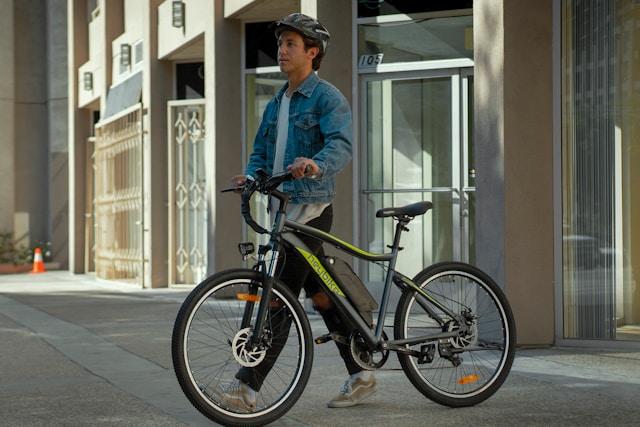Can Electric Bikes Be Easily Repaired or Serviced by Local Bike Shops?
In recent years, electric bikes (e-bikes) have surged in popularity, revolutionizing the way people commute, exercise, and explore the great outdoors. With their assisted pedaling capabilities and eco-friendly appeal, e-bikes have become a preferred choice for many urban commuters and outdoor enthusiasts alike. However, amidst the excitement of owning an e-bike, it’s crucial to pause and consider the practicalities of ownership beyond the initial purchase.
The Rising Trend of Electric Bikes:
E-bikes have swiftly emerged as a game-changer in the realm of transportation and recreation. Their electric motors provide a boost to pedaling efforts, making cycling more accessible to a wider range of individuals, including those with physical limitations or those seeking a less strenuous biking experience. This accessibility, coupled with the growing awareness of environmental sustainability, has contributed to the exponential growth of the e-bike market in recent years.
Considering Repair and Servicing Options:
While the allure of e-bikes lies in their convenience and eco-friendliness, prospective buyers need to delve into the practicalities of ownership. Among the crucial considerations is the realm of repair and servicing. Just like traditional bicycles, e-bikes require regular maintenance to ensure optimal performance and longevity. However, the added complexity of electric components necessitates specialized attention when it comes to repairs and servicing.
The Main Question: Can Local Bike Shops Effectively Handle E-Bike Repairs and Servicing?
This brings us to a pivotal question for e-bike owners: can local bike shops effectively handle the unique repair and servicing needs of electric bicycles? While traditional bike shops are ubiquitous, boasting a wealth of expertise in conventional bicycles, the advent of e-bikes introduces a new dimension to the equation. Thus, it prompts us to explore the capabilities of local bike shops in catering to the specialized requirements of e-bike maintenance and repair.
In this blog post, we’ll delve into the intricacies of electric bike maintenance, explore the capabilities of local bike shops, compare DIY repair options with professional servicing, offer tips for finding a reliable service provider, address common e-bike issues and fixes, and shed light on warranty coverage considerations. By the end, you’ll have a comprehensive understanding of the repair and servicing landscape for e-bikes, empowering you to make informed decisions as an e-bike owner. So let’s embark on this journey to unravel the mysteries of e-bike repair and servicing together.
Key Takeaways
- Regular maintenance is essential for keeping electric bikes in good condition.
- Local bike shops may have varying levels of expertise in handling e-bike repairs.
- DIY repairs can be an option for simple maintenance tasks, but professional servicing may be necessary for complex issues.
- Researching and selecting a reliable local bike shop is crucial for e-bike owners.
- Understanding warranty coverage can help e-bike owners navigate repair and servicing costs.
- Being aware of common e-bike issues and fixes can empower owners to troubleshoot problems.
- Prioritizing maintenance and timely repairs can extend the lifespan of electric bikes.
Understanding Electric Bike Maintenance:
Electric bike maintenance encompasses a series of tasks aimed at preserving the functionality and longevity of electric bicycles. Just as with traditional bicycles, regular maintenance is essential for ensuring optimal performance and safety. However, due to the incorporation of electric components, e-bike maintenance introduces a unique set of considerations
Importance of Electric Bike Maintenance:
Maintaining an electric bike is paramount to its performance and durability. Regular upkeep not only enhances the riding experience but also safeguards against potential malfunctions and safety hazards. By adhering to a routine maintenance schedule, e-bike owners can prolong the lifespan of crucial components, mitigate the risk of breakdowns, and maximize the efficiency of their rides.
Components Requiring Regular Maintenance:
- Motor: The heart of an electric bike, the motor, necessitates periodic inspection and maintenance. This includes ensuring proper lubrication, monitoring for unusual sounds or vibrations, and addressing any issues with power delivery or responsiveness promptly.
- Battery: The battery pack is the powerhouse of an e-bike, providing the energy required to propel the vehicle. Regular maintenance involves monitoring battery health, charging habits, and storage conditions to optimize performance and prolong lifespan. Additionally, periodic cleaning and inspection of battery connections are essential to prevent corrosion and ensure reliable operation.
- Drivetrain: The drivetrain of an electric bike encompasses components such as the chain, gears, and derailleur. Routine maintenance involves cleaning, lubrication, and adjustment to minimize wear and maintain smooth shifting and efficient power transfer. Additionally, inspecting for signs of wear or damage and replacing worn components promptly is crucial to prevent premature failure.
Differences Between Traditional Bike Maintenance and E-Bike Maintenance:
While many maintenance tasks overlap between traditional bikes and e-bikes, the latter introduces unique considerations due to its electric propulsion system. Unlike conventional bicycles, e-bikes feature complex electronic components, such as motors, controllers, and battery management systems, which require specialized attention. Therefore, e-bike maintenance often involves a combination of traditional mechanical upkeep and electrical troubleshooting, necessitating a higher level of expertise and familiarity with electric systems.
Understanding electric bike maintenance is essential for e-bike owners to ensure the longevity and optimal performance of their vehicles. By regularly inspecting and servicing key components such as the motor, battery, and drivetrain, e-bike owners can enjoy a smooth and reliable riding experience while minimizing the risk of mechanical issues. However, it’s crucial to recognize the differences between traditional bike maintenance and e-bike maintenance, acknowledging the specialized expertise required to address the unique needs of electric bicycles.
RELATED CONTENT – Why Does My Electric Bike Keep Cutting Out?
Local Bike Shop Capabilities:
Local bike shops serve as indispensable hubs for cyclists, offering a wide range of services to support their riding needs. From bike sales and rentals to repairs and maintenance, these establishments play a crucial role in fostering cycling communities and promoting sustainable transportation. However, when it comes to electric bikes (e-bikes), the question arises: are local bike shops equipped to handle the unique repair and servicing requirements of electric bikes?
Expertise and Resources at Local Bike Shops:
Local bike shops are staffed by knowledgeable professionals who possess a wealth of expertise in all things cycling. Mechanics undergo rigorous training and apprenticeships to hone their skills in bike assembly, repair, and maintenance. These individuals are passionate about cycling and dedicated to providing exemplary service to customers, whether they’re seasoned cyclists or newcomers to the sport.
In addition to skilled personnel, bike shops are equipped with a comprehensive array of tools and equipment tailored to handle various bicycle repair and maintenance tasks. From specialized tools for wheel truing and drivetrain adjustments to diagnostic equipment for troubleshooting electrical components, bike shops are well-prepared to address a wide range of bike-related issues.
Are Local Shops Equipped to Handle E-Bike Repairs and Servicing?
One of the primary concerns among e-bike owners is whether local bike shops possess the requisite expertise and resources to service electric bicycles effectively. While traditional bike shops excel in maintaining conventional bicycles, the advent of e-bikes introduces new complexities that demand specialized knowledge and equipment.
Fortunately, many local bike shops have recognized the growing popularity of e-bikes and have adapted their services to accommodate these modern marvels. Some shops invest in training programs to educate their mechanics on the intricacies of e-bike repair and servicing. They also stock specialized tools and diagnostic equipment specifically designed for electric bike maintenance.
Training and Certification of Bike Shop Mechanics in Dealing with Electric Bikes:
To ensure that their mechanics are well-equipped to handle e-bike repairs and servicing, some bike shops enroll their staff in specialized training courses focused on electric bicycle technology. These courses cover topics such as motor maintenance, battery diagnostics, and electrical system troubleshooting.
Furthermore, certification programs provided by e-bike manufacturers or industry organizations offer validation of a mechanic’s proficiency in dealing with electric bikes. Mechanics who undergo such certification demonstrate their commitment to staying abreast of the latest advancements in e-bike technology and best practices in maintenance and repair.
While local bike shops traditionally excel in servicing conventional bicycles, many are rising to the challenge of accommodating the growing demand for e-bike repairs and servicing. By investing in training and certification programs and equipping themselves with specialized tools and resources, bike shops are increasingly capable of meeting the unique needs of e-bike owners. As a result, e-bike enthusiasts can confidently turn to their local bike shop for expert assistance in keeping their electric steeds in prime condition for many miles of enjoyable riding.
RELATED CONTENT – Easy DIY Electric Bike Conversion
RELATED CONTENT – Affordable Electric Bikes Under $500
DIY Electric Bike Repairs vs. Professional Servicing:
Maintaining an electric bike involves a balance between do-it-yourself (DIY) repairs and professional servicing. While DIY repairs offer the advantage of cost-saving and hands-on involvement, professional servicing ensures expert attention and comprehensive solutions. Let’s delve into the benefits and drawbacks of each approach, along with tips for e-bike owners to navigate their maintenance needs effectively.
Benefits and Drawbacks of DIY Repairs:
Benefits:
- Cost-Effectiveness: DIY repairs can save money on labor costs, making them an attractive option for budget-conscious e-bike owners.
- Empowerment: Performing DIY repairs provides a sense of accomplishment and empowerment, allowing owners to develop a deeper understanding of their bikes.
- Convenience: DIY repairs can be performed at home, eliminating the need to schedule appointments or wait for service availability.
Drawbacks:
- Skill Level Required: DIY repairs require a certain level of mechanical aptitude and familiarity with e-bike components. Inexperienced individuals may risk causing further damage.
- Limited Resources: DIY repairs may be limited by the availability of tools and specialized equipment required for certain tasks.
- Safety Concerns: Incorrectly performed repairs can compromise rider safety and lead to accidents or injuries.
Tips for Basic DIY Maintenance Tasks:
- Regular Cleaning: Keep your e-bike clean by wiping down the frame, components, and drivetrain after each ride. Use mild soap and water to remove dirt and grime, and avoid high-pressure sprays that can damage electrical components.
- Tire Maintenance: Check tire pressure regularly and inflate to the recommended PSI. Inspect tires for signs of wear or damage, and replace them as needed to maintain traction and ride quality.
- Chain Lubrication: Keep the chain properly lubricated to prevent rust and corrosion. Apply chain lubricant sparingly and wipe off any excess to avoid attracting dirt and debris.
- Brake Adjustment: Periodically check brake pads for wear and adjust brake cable tension as needed to ensure responsive braking performance. Replace worn brake pads promptly to maintain stopping power.
- Battery Care: Follow manufacturer recommendations for battery care, including proper charging and storage practices. Avoid exposing the battery to extreme temperatures or prolonged periods of disuse.
Knowing When to Seek Professional Assistance:
While DIY repairs can address minor maintenance tasks, complex issues require professional expertise. E-bike owners should seek professional assistance for the following scenarios:
- Electrical Problems: Issues with the motor, controller, or electrical wiring should be diagnosed and repaired by a qualified technician to avoid safety hazards and ensure proper functionality.
- Major Component Failure: If a critical component such as the motor or battery fails, professional servicing may be necessary to diagnose the problem and source replacement parts.
- Warranty Repairs: To preserve warranty coverage, e-bike owners should rely on authorized service centers for repairs covered under warranty agreements.
While DIY repairs offer cost-saving and educational benefits, e-bike owners must exercise caution and recognize their limitations. Basic maintenance tasks can be performed at home with the right tools and knowledge, but complex issues require the expertise of professional technicians. By striking a balance between DIY efforts and professional servicing, e-bike owners can ensure the longevity and performance of their electric steeds.
Tips for Finding a Reliable Local Bike Shop for E-Bike Repairs:
Finding a trustworthy local bike shop to handle e-bike repairs is crucial for ensuring the longevity and optimal performance of your electric steed. Here are some tips to guide you in evaluating and selecting the right bike shop for your e-bike servicing needs:
Guidance on Evaluating Local Bike Shops:
- Reputation: Begin by researching local bike shops and assessing their reputation within the cycling community. Online reviews, testimonials, and recommendations from fellow cyclists can provide valuable insights into a shop’s reliability and quality of service.
- Experience with E-Bikes: Look for bike shops with a demonstrated track record of servicing electric bicycles. Shops that specialize in e-bikes or have mechanics with specific training and expertise in electric bike technology are better equipped to address the unique needs of these vehicles.
- Proximity to Your Location: Consider the proximity of the bike shop to your home or workplace. Opting for a shop that is conveniently located can save time and hassle when dropping off or picking up your e-bike for repairs or maintenance.
Factors to Consider:
- Certifications and Training: Inquire about the qualifications and certifications of the bike shop’s mechanics, particularly regarding electric bike servicing. Mechanics who have undergone specialized training or certification programs demonstrate a commitment to excellence in e-bike maintenance.
- Warranty Support: Determine whether the bike shop is an authorized service center for e-bike brands that offer warranty coverage. Authorized service centers have the expertise and resources to perform warranty repairs and honor manufacturer warranties, providing added peace of mind for e-bike owners.
- Range of Services: Evaluate the range of services offered by the bike shop, beyond basic repairs and maintenance. Shops that offer diagnostic services, upgrades, and customizations tailored to e-bikes can provide comprehensive support for your cycling needs.
Reaching Out to Bike Shops:
- Direct Inquiry: Contact prospective bike shops directly to inquire about their e-bike servicing capabilities. Ask about their experience with e-bikes, the availability of specialized tools and equipment, and the turnaround time for repairs.
- Consultation: Schedule a consultation or visit the bike shop in person to discuss your e-bike servicing requirements. Use this opportunity to assess the shop’s professionalism, communication, and willingness to address your concerns.
- Request References: Request references from satisfied e-bike owners who have utilized the services of the bike shop. Hearing firsthand accounts of their experiences can provide valuable insights into the shop’s reliability and customer satisfaction.
By following these tips and conducting thorough research, you can find a reliable local bike shop that meets your e-bike servicing needs. Remember to prioritize factors such as reputation, experience, and proximity, and don’t hesitate to reach out to multiple shops to compare services and offerings. With the right bike shop on your side, you can enjoy peace of mind knowing that your e-bike is in capable hands.
Common E-Bike Issues and Fixes:
Electric bikes (e-bikes) offer a convenient and eco-friendly mode of transportation, but like any mechanical device, they are susceptible to occasional issues. Understanding common e-bike problems and having the knowledge to address them can help ensure smooth and reliable rides. Let’s explore some typical issues e-bike owners may encounter and how to troubleshoot and fix them
Identifying Common Problems:
- Battery Issues: One of the most common e-bike problems involves the battery. Symptoms may include decreased range, sudden power loss, or failure to hold a charge. Battery issues can arise due to overcharging, extreme temperatures, or natural degradation over time.
- Motor Malfunctions: Problems with the e-bike motor can manifest as reduced power output, unusual noises, or intermittent operation. Motor issues may stem from wiring faults, overheating, or mechanical wear and tear.
- Electrical Problems: Electrical issues can manifest in various forms, such as flickering lights, non-responsive displays, or intermittent power delivery. Faulty wiring, loose connections, or damaged electrical components may be to blame.
Troubleshooting Tips and DIY Solutions:
- Battery Issues:
- Check Connections: Ensure that the battery is securely connected to the e-bike’s electrical system. Clean any corrosion or debris from the battery terminals and connectors.
- Monitor Charging Habits: Avoid overcharging the battery or exposing it to extreme temperatures, as these factors can degrade battery performance over time.
- Calibrate Battery: Periodically calibrate the battery by fully discharging and then fully recharging it. This can help recalibrate the battery’s capacity and improve accuracy in estimating the remaining range.
- Motor Malfunctions:
- Inspect Wiring: Check for loose or damaged wires around the motor and controller. Tighten connections and repair any frayed or exposed wires.
- Cooling: Ensure proper motor cooling by avoiding prolonged periods of high-speed operation or heavy loads. Allow the motor to cool down between rides to prevent overheating.
- Motor Alignment: Check the motor alignment and adjust if necessary to ensure smooth operation and minimize strain on mechanical components.
- Electrical Problems:
- Check Connections: Inspect all electrical connections, including connectors, cables, and junctions. Tighten loose connections and repair any damaged wiring.
- Diagnose Sensors: Test the functionality of sensors such as the torque sensor or speed sensor to ensure accurate input signals to the controller.
- Reset Electronics: Perform a system reset by disconnecting the battery and holding down the power button for a few seconds. This can sometimes resolve minor electrical glitches.
Importance of Regular Maintenance:
Regular maintenance is key to preventing major e-bike problems and ensuring optimal performance. By adhering to a routine maintenance schedule, e-bike owners can detect and address potential issues before they escalate into costly repairs. Tasks such as cleaning, lubricating, and inspecting key components should be performed regularly to keep the e-bike in top condition.
Ebike owners may encounter common issues related to the battery, motor, and electrical system. By following troubleshooting tips and implementing DIY solutions where possible, riders can resolve many problems on their own. However, regular maintenance remains paramount in preventing major issues and prolonging the lifespan of the e-bike. By staying proactive and attentive to the needs of their electric steeds, e-bike owners can enjoy smooth and trouble-free rides for years to come.
RELATED CONTENT – Should you Get Insurance for your Electric Bike?
Understanding Warranty Coverage for E-Bike Repairs:
E-bike manufacturers typically provide warranty coverage to protect consumers against defects in materials and workmanship. Understanding the terms and conditions of the warranty is essential for e-bike owners to leverage their rights and obtain timely repairs or replacements. Let’s delve into the specifics of e-bike warranty coverage and how to navigate warranty claims effectively:
Explanation of Warranty Coverage:
E-bike warranties typically consist of two main components: a frame warranty and a component warranty. The frame warranty typically covers defects in the frame structure and welding for a specified period, often ranging from one to five years. Component warranties, on the other hand, cover individual parts such as the motor, battery, and electronics, with varying durations and coverage terms.
Types of Repairs and Servicing Covered Under Warranty:
- Defective Components: Warranty coverage extends to repairs or replacements of components that fail due to defects in materials or workmanship. This may include issues such as battery failure, motor malfunction, or electrical system faults.
- Frame Defects: Frame warranties cover structural defects in the frame, such as cracks, weld failures, or material flaws. Repairs or replacements of frames affected by manufacturing defects are typically covered under warranty.
- Labor Costs: In some cases, warranty coverage may include labor costs associated with diagnosing and repairing covered issues. However, labor warranty terms vary between manufacturers and may be subject to limitations or exclusions.
Navigating Warranty Claims:
- Read the Fine Print: Carefully review the terms and conditions of the e-bike warranty to understand coverage limitations, exclusions, and duration. Pay attention to warranty registration requirements and any maintenance obligations that may affect warranty eligibility.
- Document Issues: Keep detailed records of any issues or malfunctions experienced with your e-bike, including dates, descriptions of symptoms, and any relevant photos or videos. Thorough documentation can strengthen your warranty claim and expedite the resolution process.
- Contact Manufacturer: If you encounter a problem covered under warranty, contact the e-bike manufacturer or authorized dealer to initiate a warranty claim. Provide them with the necessary documentation and information to facilitate the claims process.
- Seek Local Assistance: In some cases, e-bike owners may choose to seek assistance from local bike shops for warranty repairs or servicing. Check with the manufacturer or dealer to confirm whether local bike shops are authorized to perform warranty work and ensure that any repairs performed by third parties comply with warranty requirements.
- Follow-Up: Stay proactive in following up on your warranty claim to ensure timely resolution. Communicate regularly with the manufacturer or dealer to track the progress of repairs and address any concerns or questions that arise.
Understanding e-bike warranty coverage is essential for e-bike owners to protect their investment and obtain timely repairs or replacements when needed. By familiarizing themselves with warranty terms, documenting issues, and following the appropriate steps for warranty claims, e-bike owners can navigate the process effectively and ensure a satisfactory resolution. Additionally, leveraging the expertise of local bike shops for warranty repairs can offer convenience and peace of mind, provided they comply with manufacturer warranty requirements.
FAQs
1. How often should I have my electric bike serviced?
The frequency of e-bike servicing depends on various factors, including usage patterns, riding conditions, and manufacturer recommendations. As a general guideline, e-bike owners should aim to have their bikes serviced at least once a year or every 500-1000 miles, whichever comes first. During routine servicing, mechanics will inspect and tune up key components such as the motor, battery, drivetrain, brakes, and electrical system to ensure optimal performance and safety. Additionally, e-bike owners should be vigilant for any signs of wear or malfunction between scheduled services and seek professional assistance promptly if issues arise.
2. Can I use regular bike repair shops for e-bike repairs?
While many traditional bike repair shops are equipped to handle basic e-bike repairs, it’s essential to consider the complexity of electric bike components when seeking servicing. E-bikes feature specialized electrical systems, motors, and batteries that require expertise and resources beyond those typically found in traditional bike shops. Therefore, it’s advisable to choose a bike shop with experience in servicing e-bikes or seek out authorized service centers recommended by the e-bike manufacturer. These establishments have the knowledge and tools necessary to diagnose and address e-bike-specific issues effectively, ensuring optimal performance and longevity.
3. What are some signs that my e-bike needs professional servicing?
Several indicators suggest that your e-bike may require professional servicing:
- Unusual noises or vibrations while riding, indicate potential mechanical issues.
- Reduced power output or decreased battery range compared to normal operation.
- Erratic behavior or malfunctioning of electrical components, such as lights, display, or motor.
- Difficulty shifting gears or loss of braking effectiveness, affecting ride quality and safety. If you observe any of these signs or experience other abnormalities with your e-bike, it’s advisable to seek professional assistance promptly to diagnose and address underlying issues before they escalate.
4. Are there any maintenance tasks I can do myself to save money?
Yes, many e-bike maintenance tasks can be performed by owners with basic mechanical skills and tools, helping to save money on professional servicing fees. Some DIY maintenance tasks include:
- Regular cleaning and lubrication of the chain, drivetrain, and other moving parts.
- Checking tire pressure and inspecting tires for wear or damage.
- Tightening bolts and fasteners to ensure they are properly secured.
- Adjusting brakes and gears for optimal performance.
- Monitoring battery health and following manufacturer recommendations for charging and storage. By staying proactive with DIY maintenance, e-bike owners can extend the lifespan of their bikes and minimize the need for costly repairs.
5. Will DIY repairs void my e-bike’s warranty?
In most cases, DIY repairs performed according to manufacturer guidelines will not void your e-bike’s warranty. However, it’s essential to exercise caution and adhere to warranty terms and conditions to ensure warranty coverage remains intact. Before attempting any DIY repairs, review the warranty documentation provided by the e-bike manufacturer and follow any maintenance guidelines or restrictions specified therein. If you’re unsure about performing a repair yourself or if the issue is covered under warranty, it’s best to consult with the manufacturer or authorized dealer to avoid any potential warranty disputes.
Conclusion
In conclusion, the world of electric bikes offers a thrilling blend of convenience, sustainability, and adventure. However, ensuring the long-term enjoyment of your e-bike involves more than just hopping on and riding off into the sunset. From understanding the intricacies of maintenance to navigating warranty claims, e-bike ownership comes with its set of responsibilities and considerations.
By delving into topics such as electric bike maintenance, local bike shop capabilities, DIY repairs versus professional servicing, warranty coverage, and common e-bike issues, we’ve equipped you with the knowledge and tools to become a savvy e-bike owner. Whether you’re a seasoned rider or considering your first foray into electric biking, empowering yourself with this information will enhance your e-bike experience and ensure many miles of smooth, trouble-free riding.
Remember, the journey doesn’t end here. As you embark on your e-bike adventures, we encourage you to stay engaged with the e-bike community, share your experiences, and continue learning from fellow enthusiasts. Your feedback, questions, and insights are invaluable in fostering a vibrant and supportive community of e-bike riders.
So, what are you waiting for? Strap on your helmet, hop on your e-bike, and let the adventures begin! And don’t forget to leave a comment below sharing your thoughts, experiences, or any questions you may have. We’d love to hear from you!
Join the conversation! Share your e-bike experiences, tips, or questions in the comments below. And if you found this guide helpful, don’t forget to share it with your friends and fellow e-bike enthusiasts. Together, let’s spread the joy of electric biking and inspire others to embrace the exhilarating world of e-bikes. Happy riding!
External Sources
https://www.cyclingnews.com/features/electric-bike-maintenance/
https://www.velotricbike.com/blogs/story-landing/electric-bike-troubleshooting-guide
Kristina Grant is not just an enthusiast but a true authority on electric bikes. Nestled in the coastal beauty of Virginia, Kristina has found the perfect backdrop for her passion for electric biking. As a dedicated wife and homeschooling mom, her life revolves around family, faith, and the thrill of adventure.
Originally hailing from Ohio, Kristina's journey with electric bikes began as a curiosity and quickly evolved into a deep expertise. Her blog is a testament to her love for electric biking, combining her fascination for eco-friendly transportation with her coastal lifestyle.
When she's not cruising the beach on her electric bike, you'll find Kristina indulging in her other loves: long walks along the shore, getting lost in a good book, and cherishing moments with her loved ones. With a heart as big as her love for animals, especially cats, Kristina brings a unique perspective to the electric bike world, grounded in her strong faith in God and her dedication to a sustainable lifestyle.
Through her blog, Kristina shares her extensive knowledge of electric bikes, offering valuable insights, tips, and recommendations to fellow enthusiasts. Whether you're a seasoned rider or a newcomer to the electric bike scene, Kristina's blog is your go-to source for all things electric biking, fueled by her passion, expertise, and the scenic beauty of coastal Virginia.






